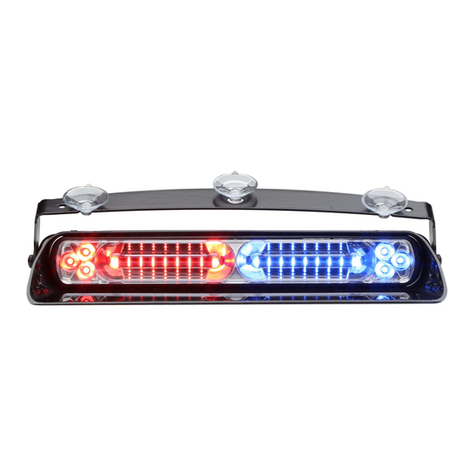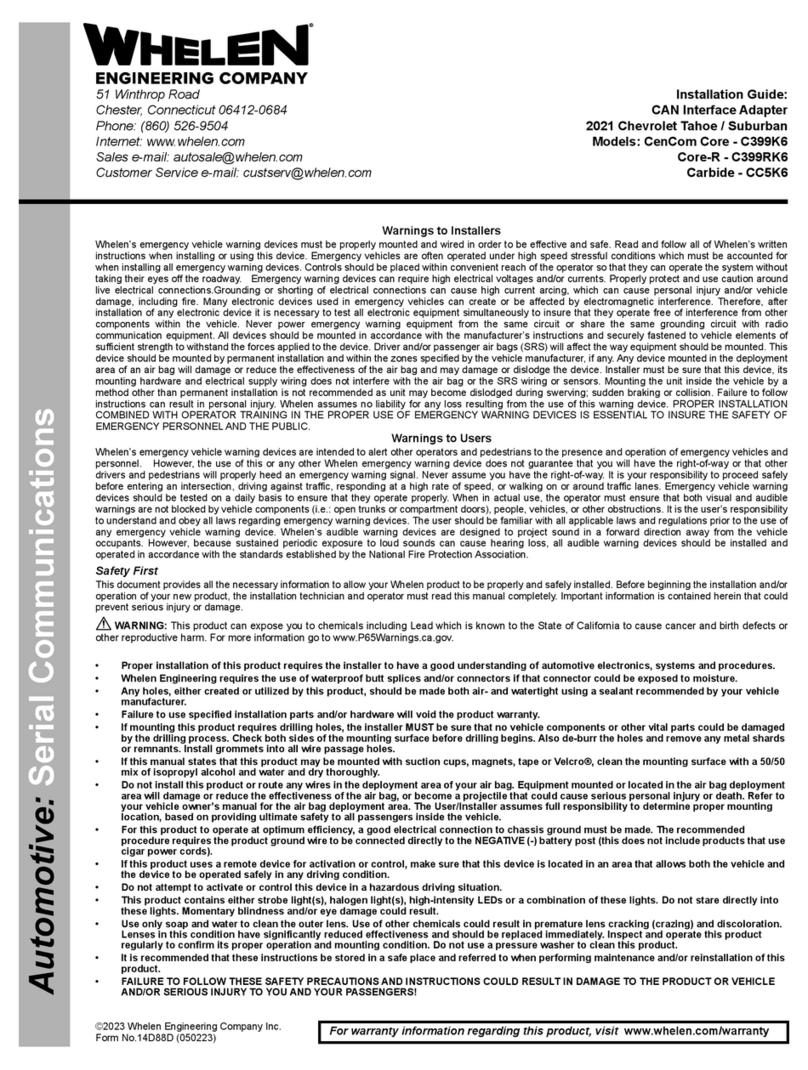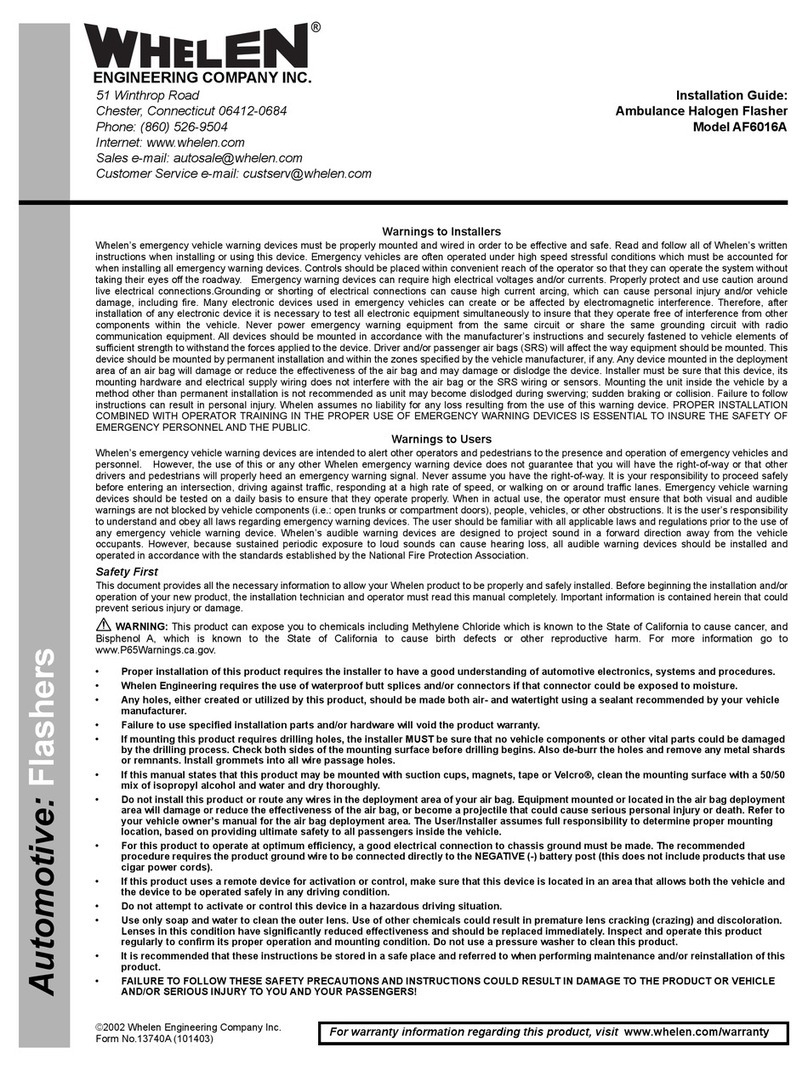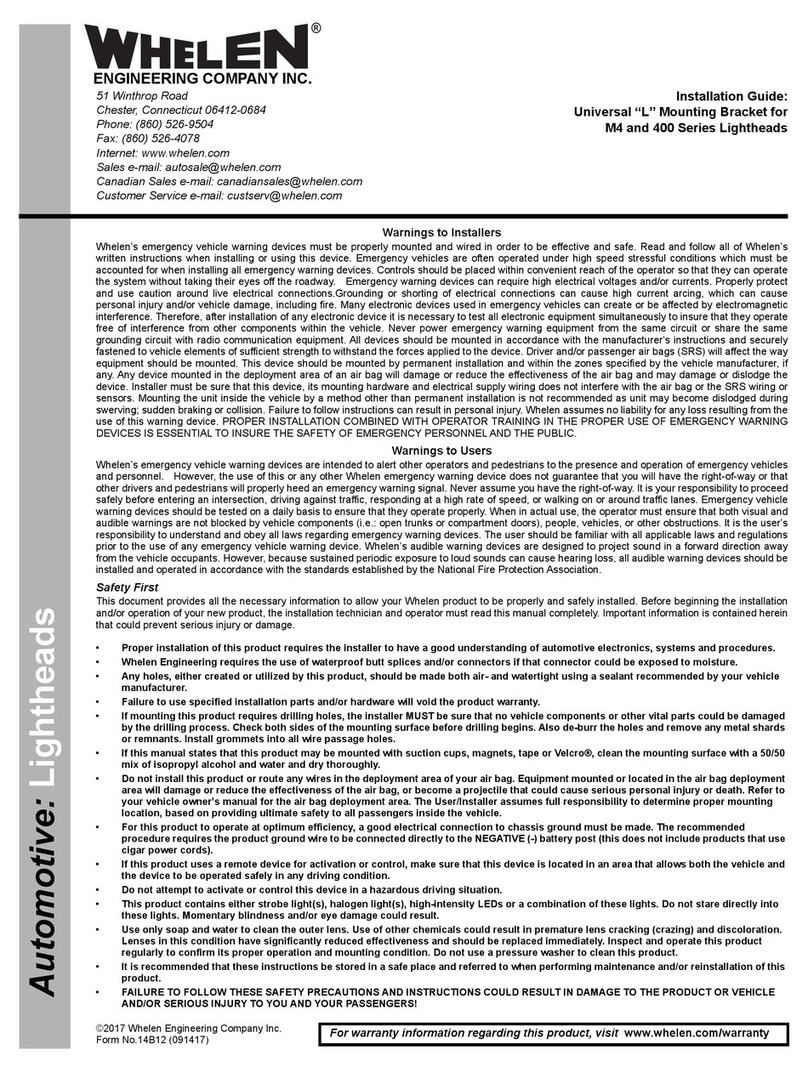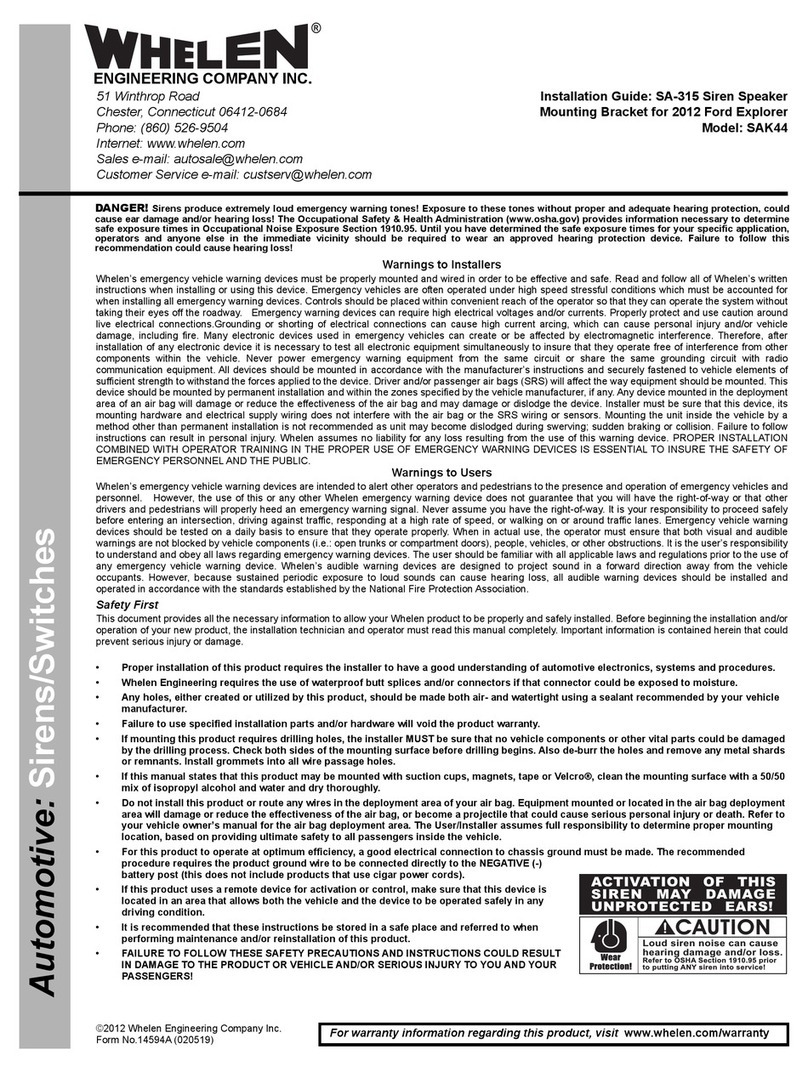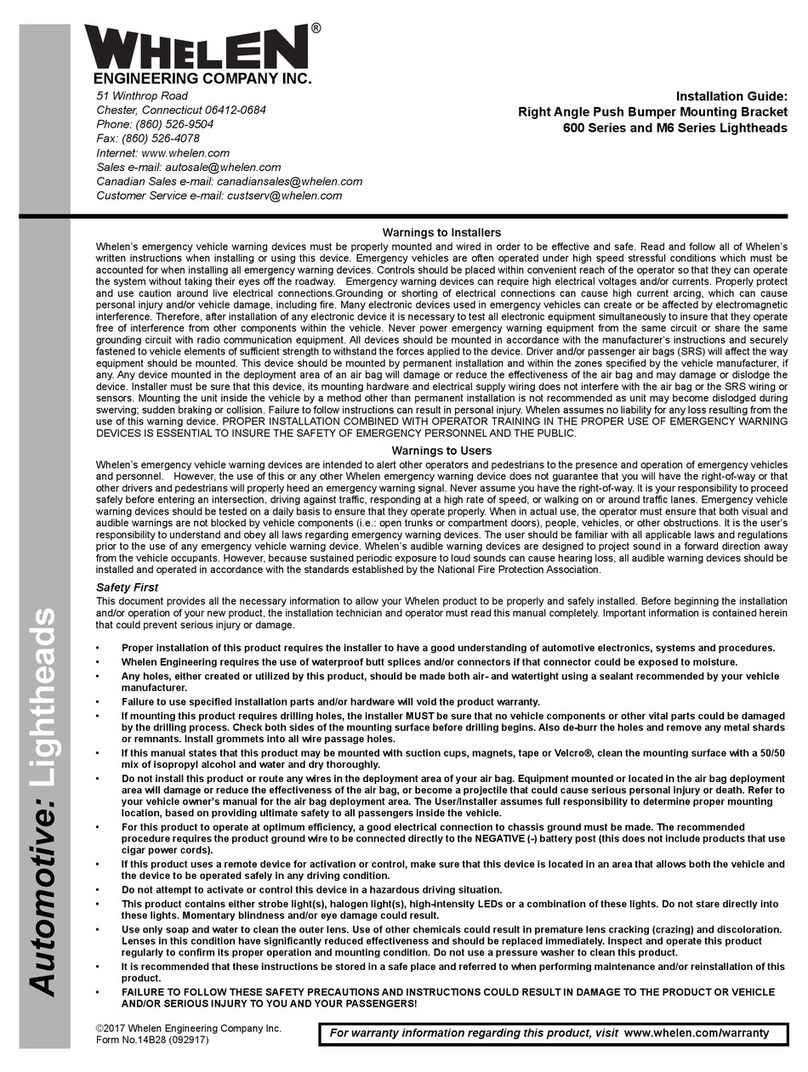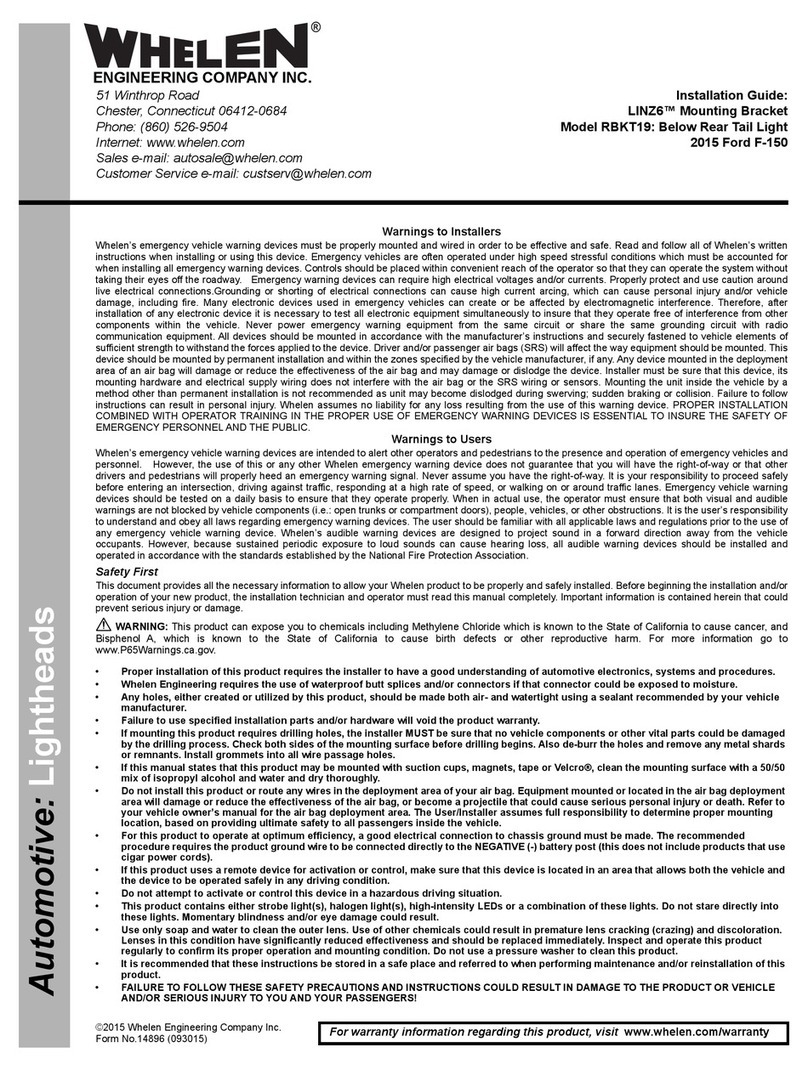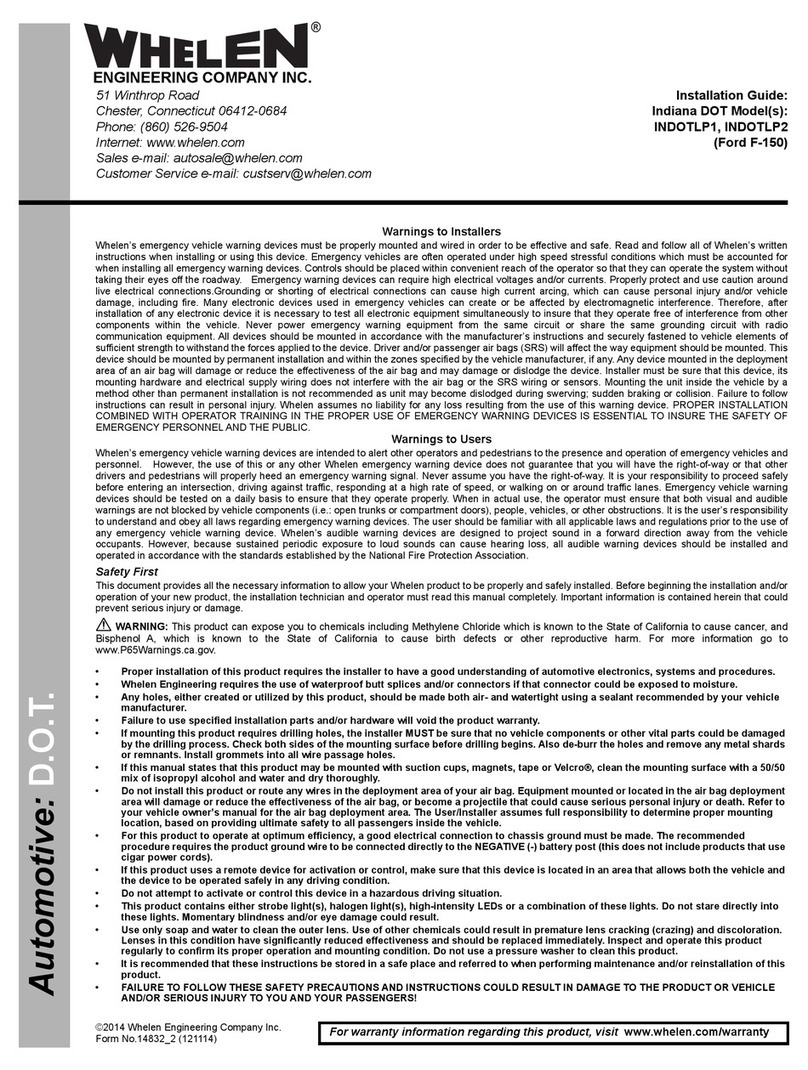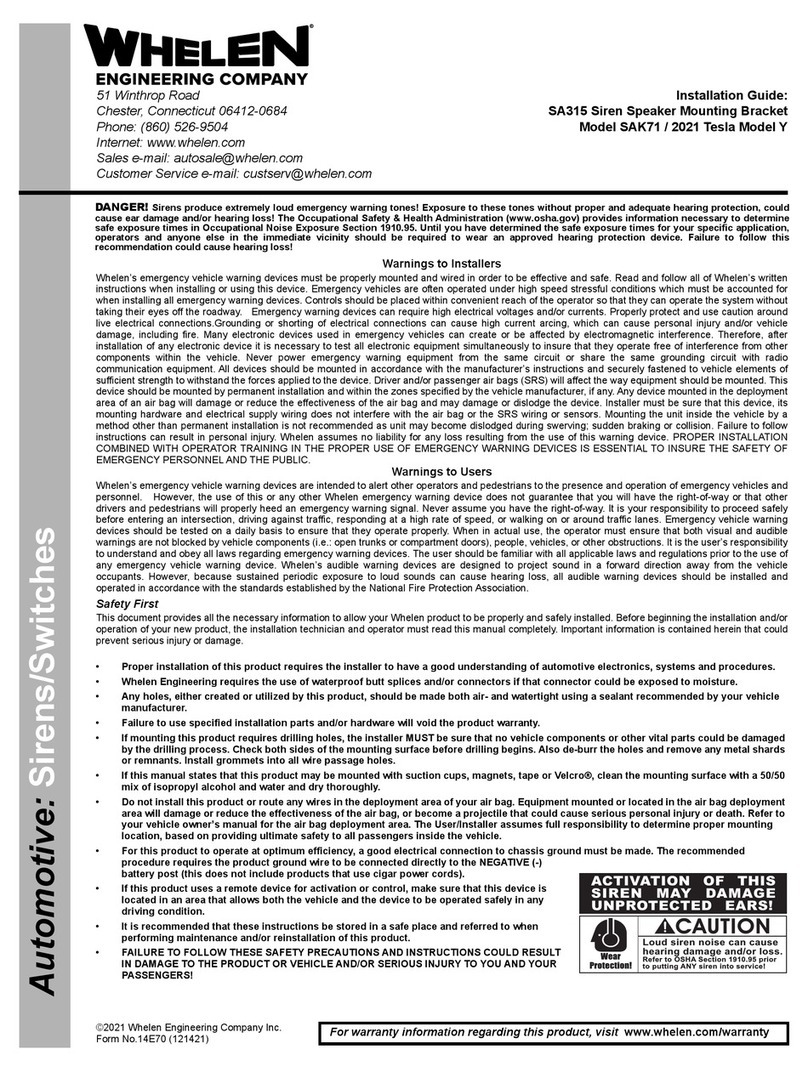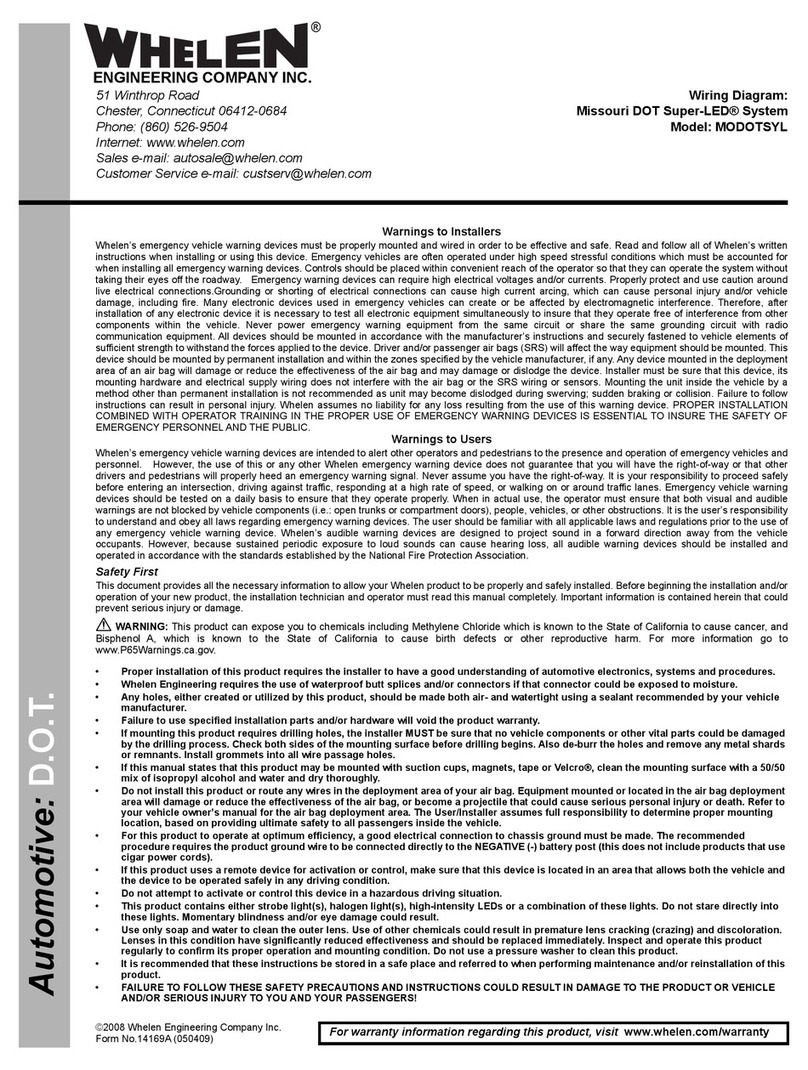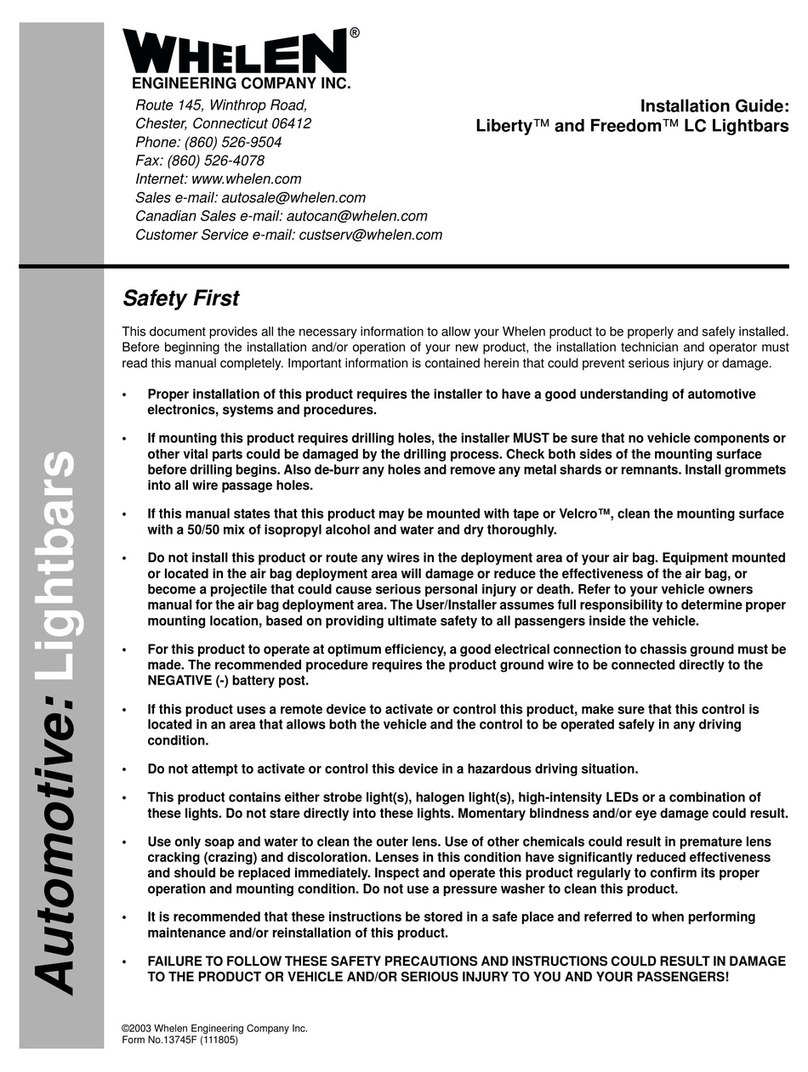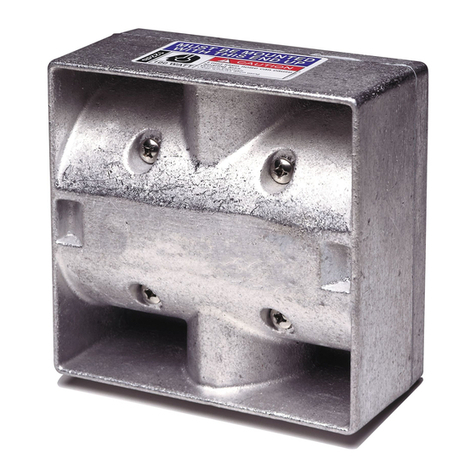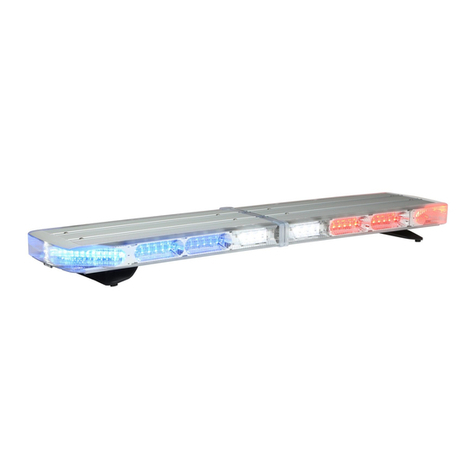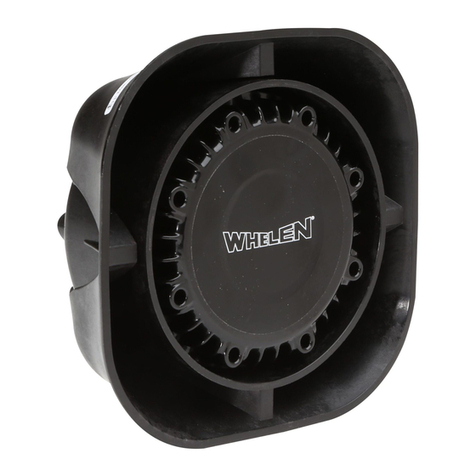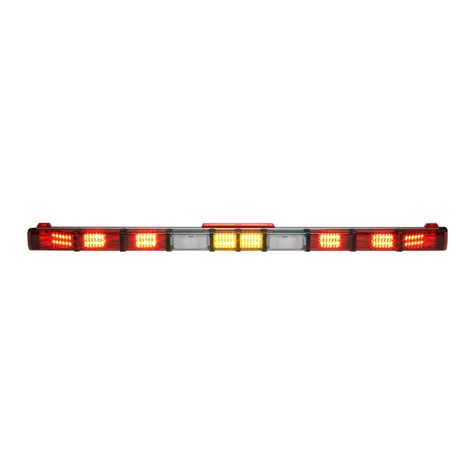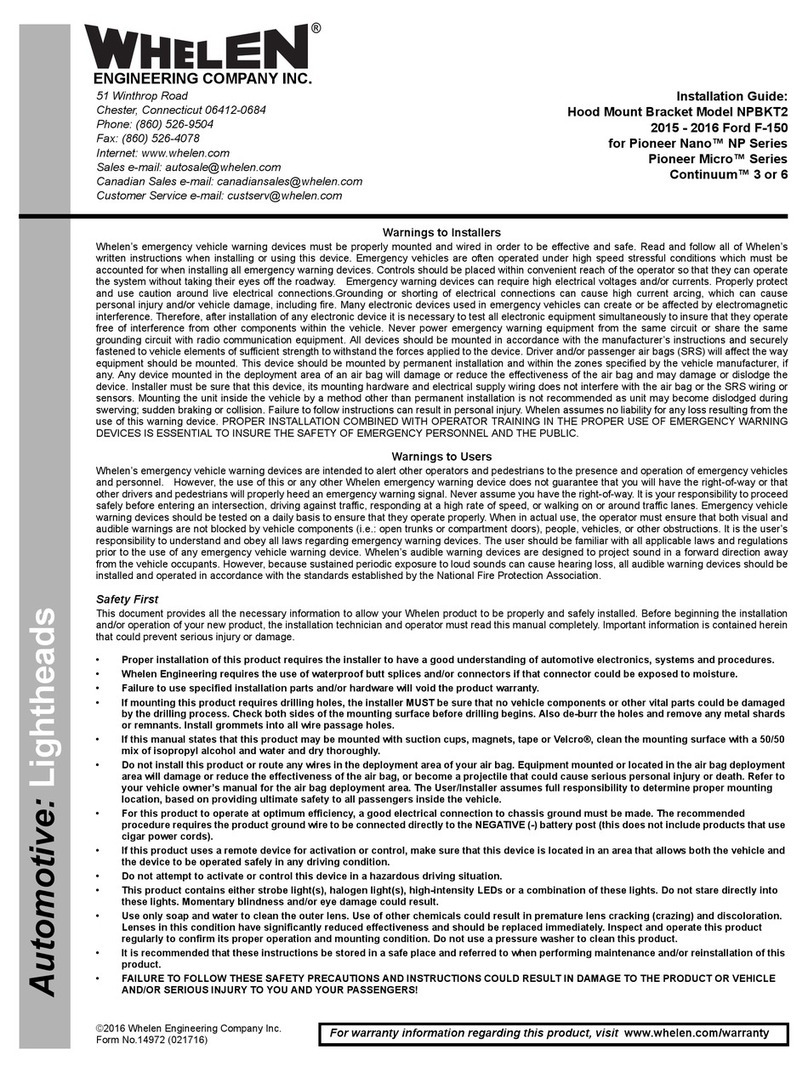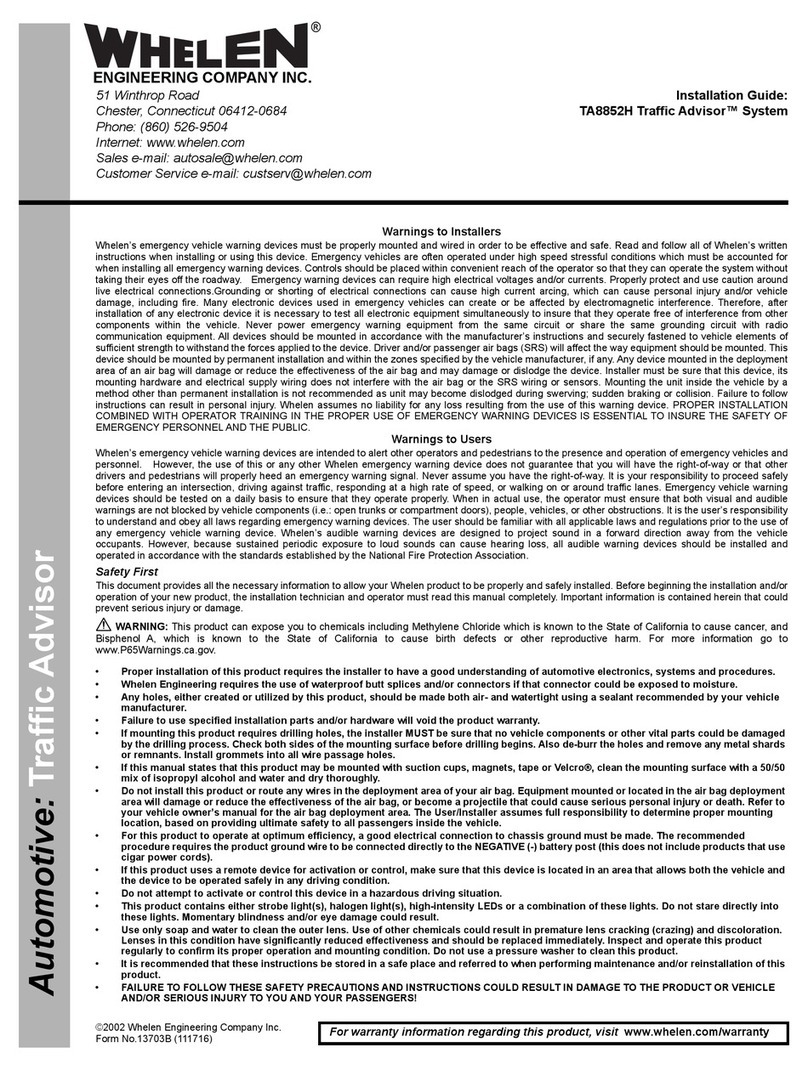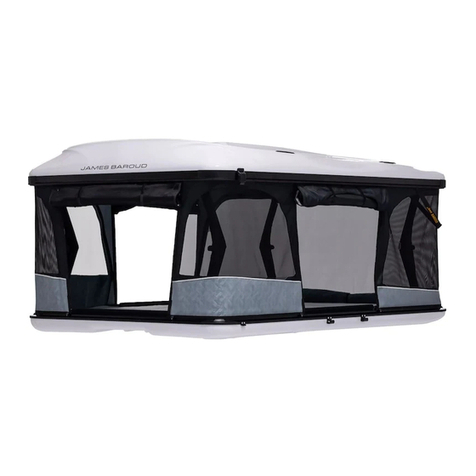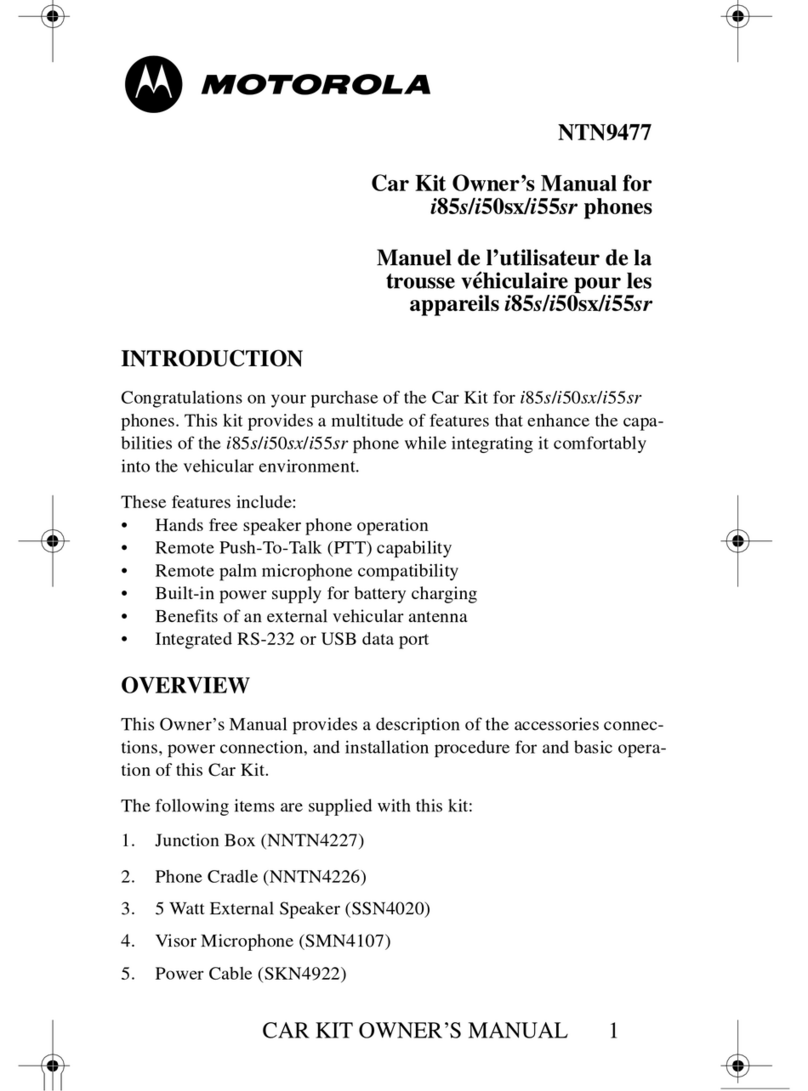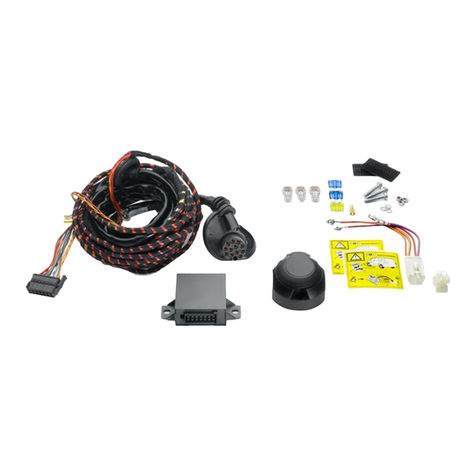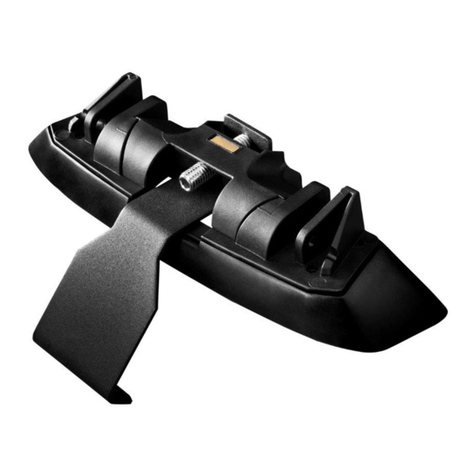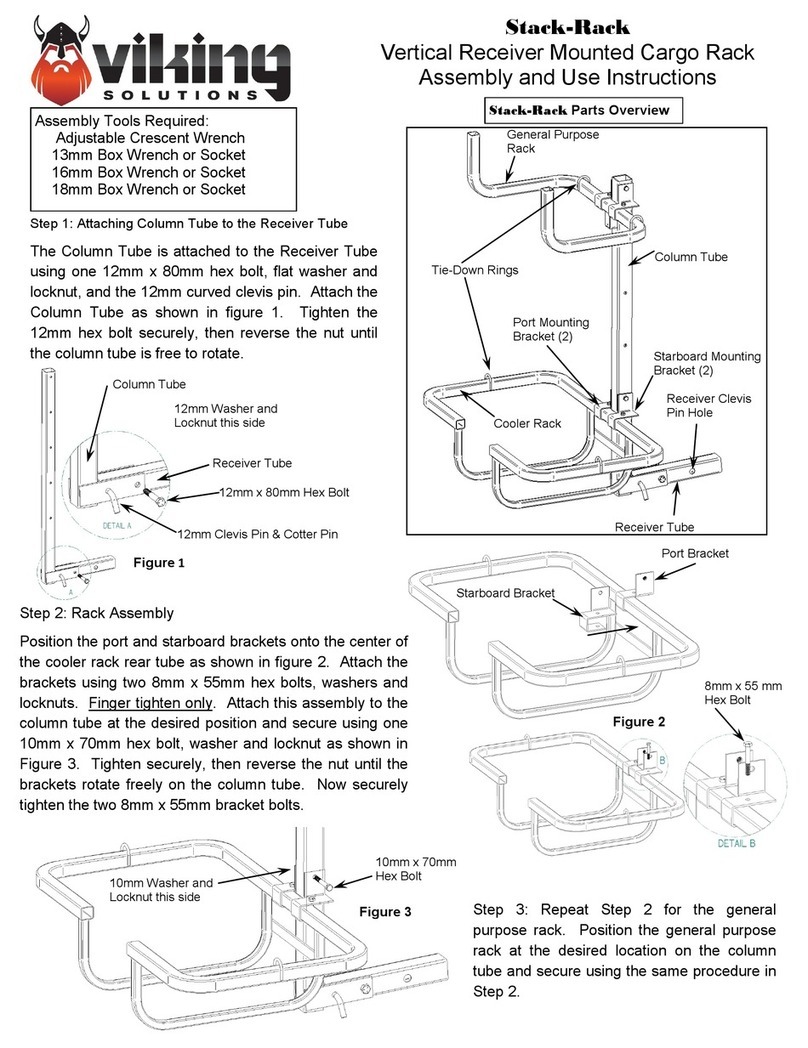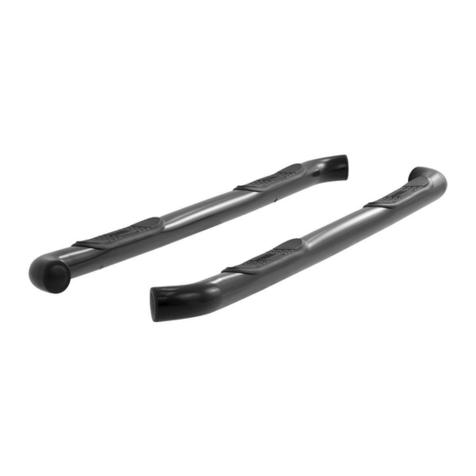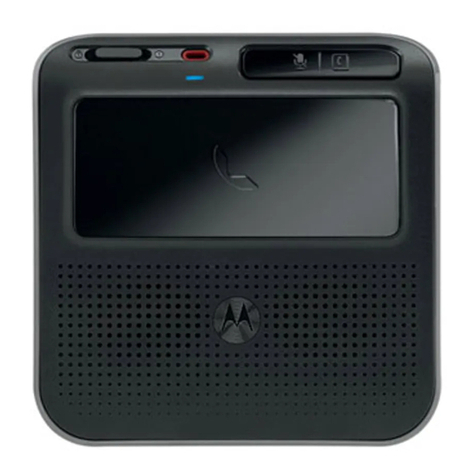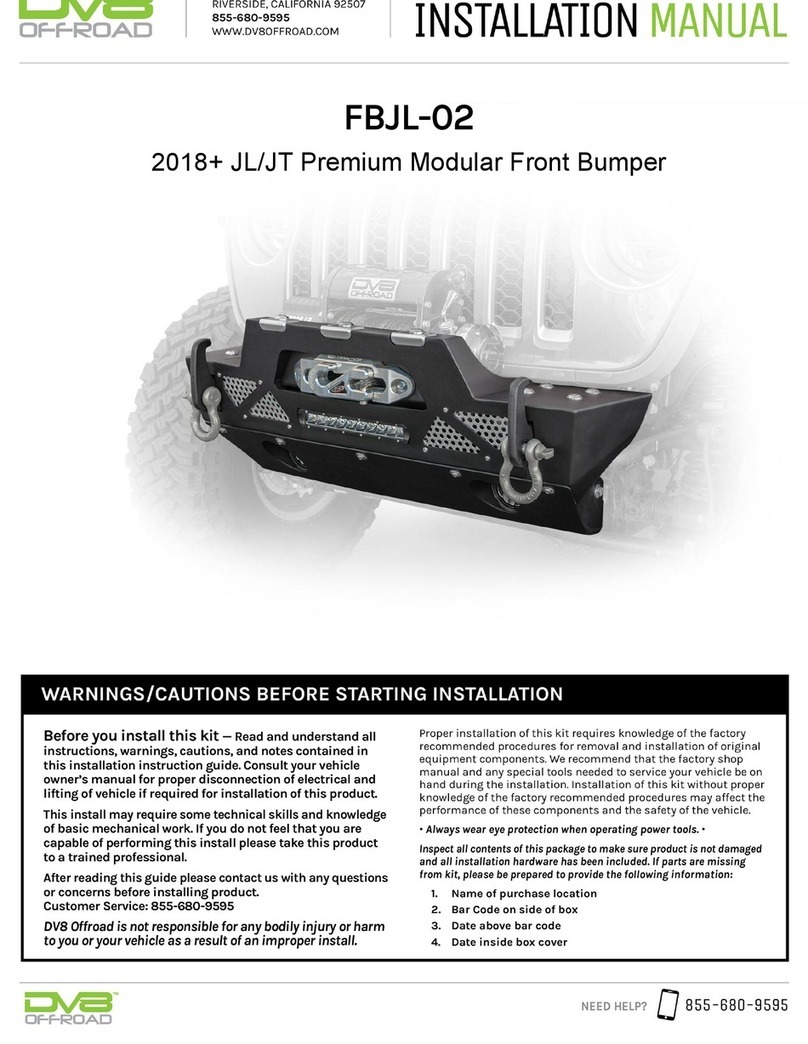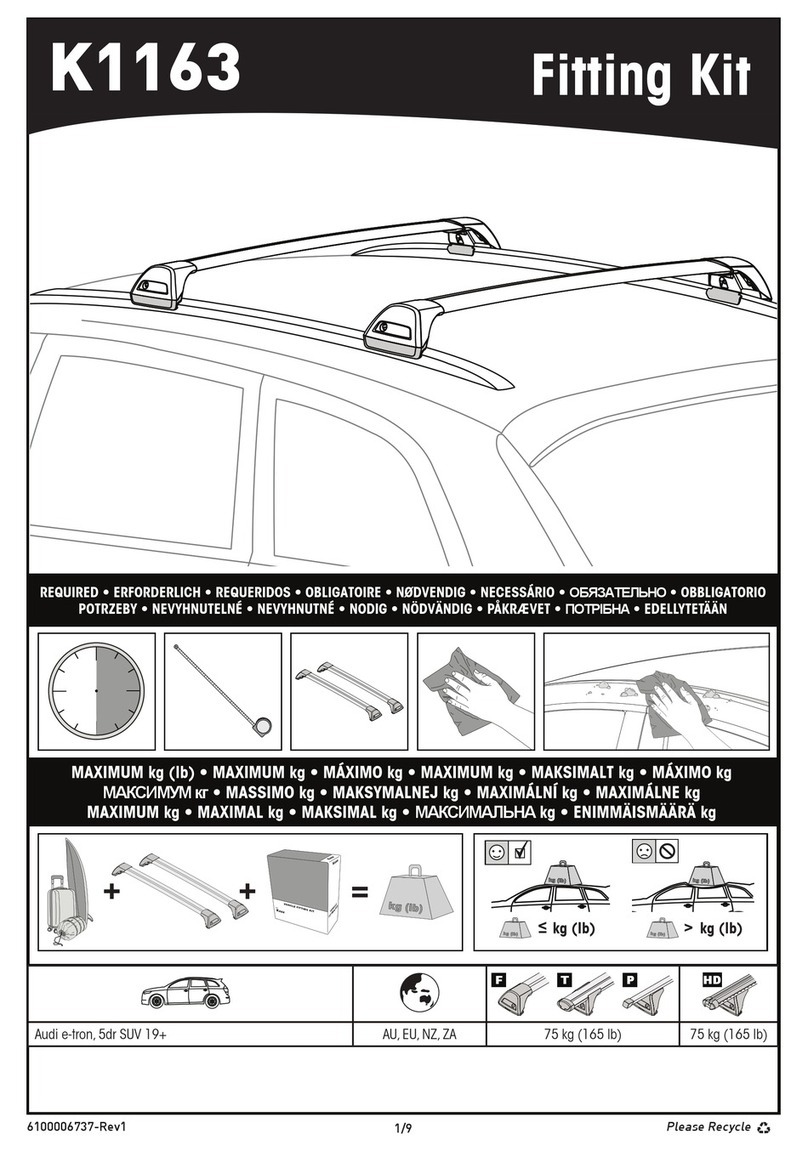
Page 2
IMPORTANT! Do not install this product or route any wires in the
deployment area of your air bag. Equipment mounted or located in
the air bag deployment area will damage or reduce the
effectiveness of the air bag, or become a projectile that could
cause serious personal injury or death. Refer to your vehicle
owners manual for the air bag deployment area. The User/Installer
assumes full responsibility to determine proper mounting
location, based on providing ultimate safety to all passengers
inside the vehicle.
Specifications:
Input Voltage: 12.8 VDC +/- 20%
Input Current -
Simultaneous: Peak: 2.8 Amps Avg. 1.1 Amps
Alternating: Peak: 1.4 Amps Avg: 0.56 Amps
Input Sync: Active Low
Sync Phase: Phase I & II @ 400ms
Input Scan-Lock™: +12 VDC @ 20 ma
Installation:
IMPORTANT! The lightbar should be located a minimum of
16" from any radio antennas!
Note: When routing the wires, it is important to choose a path
that will keep the wires away from excessive heat or any vehicle
equipment that could compromise the integrity of the wires (ex.
trunk lids, door jams, etc.)
1. Locate and install the rubber window seal (included) onto the
lower, leading edge of the housing (see next page).
2. Using an appropriately sized Torx head screwdriver, loosen the
three screws securing the driver-side visor swivel bracket to the
vehicle. Do not remove these screws.
3. Remove the screws securing the visor clip to the vehicle. Remove
and retain the clip and all hardware.
4. Locate the driver-side mounting bracket (indicated with a “D” label)
and orient as shown (see Fig.1).
5. Slide the mounting bracket fingers between the loosened swivel
bracket and the headliner. The bracket fingers should straddle the
inner section of the swivel bracket when properly oriented.
6. Position the keyed opening of the mounting bracket directly under
the mounting location for the visor clip removed in step 2. With the
bracket in this position, remount the visor clip in its original location
using the original hardware.
7. Firmly tighten any hardware loosened in this procedure.
8. Repeat this procedure for the passenger-side mounting bracket
(indicated with a “P” label).
9. Position the lightbar as shown in Fig. 1. Using the hardware
provided, secure the lightbar to the mounting brackets. Tighten
this hardware firmly.
10. Route the lightbar cable down the vehicle A-pillar and to your
control head.
11. Make all necessary wiring connections using the information
provided.
Important Impala mounting note! When mounting this product in a
Chevrolet Impala, an optical gasket must be installed as shown on
the following page. Failure to do so could result in reflected light
within the passenger compartment.
Wiring:
WARNING! All customer supplied wires that connect to the positive
terminal of the battery must be sized to supply at least 125% of the
maximum operating current and FUSED at the battery to carry that
load. DO NOT USE CIRCUIT BREAKERS WITH THIS PRODUCT!
BLACK (GROUND) - Connect this wire to Chassis Ground.
RED (Main Power) - Connect this wire to an ignition controlled circuit
capable of accommodating an additional 10 AMP current draw.
BROWN (Low Power) - When +12 VDC is applied to this wire, the lightbar is
placed in Low Power mode. Remove this voltage to restore normal
operation. A SP/ST switch is best suited for this circuit. Fuse this wire @1A.
WHITE/GREEN (Scan-Lock™) - The Scan-Lock pattern control wire
functions as follows:
To cycle through all patterns: Apply +12 volts to the WHT/GRN wire
for less than 1 second and release to cycle forward. Apply +12 volts to
the WHT/GRN wire for more than 1 second and release to cycle
backward.
To set a pattern as default: When the desired pattern is displayed,
allow it to run for more than 5 seconds. The lighthead will now display
this pattern when active.
To reset to the factory default pattern: Turn off power, apply +12 volts
to the WHT/GRN wire, then turn power on.
Note: If the owner wishes to connect the Scan-Lock wire to a
switch, an SP/ST momentary switch is recommended.
Available Scan-Lock Flash Patterns: SignalAlert™ > CometFlash® >
SingleFlash 375 > SingleFlash 75 > ActionFlash™ > ModuFlash™ ZigZag
60 > ZigZag 90 > ZigZag 120 > ActionScan™
A Normally Open Momentary Switch is best suited for this circuit. Fuse @1A.
NOTE: When the lightbar is active, a red, LED indicator located on the
underside of the housing will be visible.
WHITE/ORANGE (Steady Option) - Applying +12VDC to this wire turns two
lightheads on in steady mode. Note that this is an optional function and is not
present on all lightbars. A SP/ST switch is best suited for this circuit. Fuse
this wire @1A.
BLUE (Flashing Take-Down) - When +12VDC is applied to this wire, the
Take-Down’s are activated in flashing mode. A SP/ST switch is best suited
for this circuit. Fuse this wire @1A.
WHITE/BLACK (Take-Down) - When +12VDC is applied to this wire, the
Take-Down’s are activated in normal, steady mode. A SP/ST switch is best
suited for this circuit. Fuse this wire @1A.
ORANGE (Flash) - When +12VDC is applied to this wire, the lightbar will
display the last active Scan-Lock flash pattern. A SP/ST switch is best suited
for this circuit. Fuse this wire @1A.
When this product is wired as outlined here, the lightbar will not function until
the ignition switch is in the ON, RUN or ACC position.
